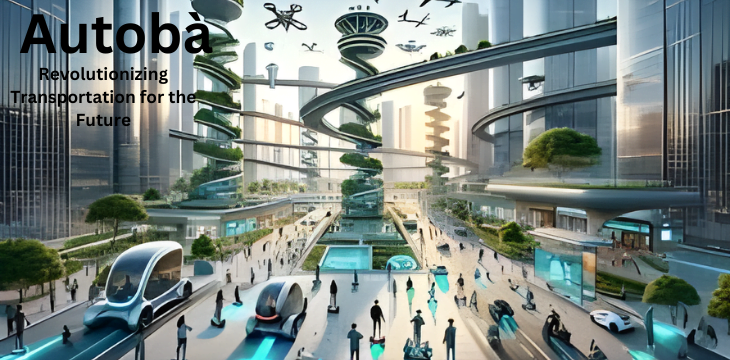Explore the incredible potential of autobà, the innovative technology shaping the future of transportation. Learn how autobà is revolutionizing the way we travel, making journeys safer, faster, and more efficient.
Table Of Contents
Introduction to autobà
In today’s fast-paced world, transportation plays a crucial role in connecting people and places. As technology continues to advance, so does the way we travel. One of the most groundbreaking developments in recent years is the introduction of autobà. But what exactly is autobà, and how does it differ from traditional modes of transportation?
Understanding autobà: A Paradigm Shift in Transportation
autobà represents a paradigm shift in the realm of transportation. Unlike conventional vehicles that rely on human drivers, autobà harnesses the power of artificial intelligence (AI) to navigate roads autonomously. This cutting-edge technology holds the promise of safer roads, reduced traffic congestion, and enhanced mobility for all.
The Evolution of autobà: From Concept to Reality
The concept of autonomous vehicles has been a topic of fascination for decades. But it’s only in recent years that we’ve seen significant strides towards its realization. With advancements in AI, sensor technology. And machine learning, autobà has transitioned from science fiction to tangible reality. Poised to reshape the way we move from point A to point B.
Key Features of autobà: Redefining Travel Experience
autobà boasts a myriad of features that set it apart from traditional vehicles. From state-of-the-art sensors that detect obstacles in real-time to sophisticated algorithms that optimize route planning. Each aspect of autobà is meticulously designed to deliver a seamless and efficient travel experience.
The Impact of autobà on Transportation
The introduction of autobà is poised to have a profound impact on the transportation landscape, ushering in a new era of mobility and connectivity. Let’s delve deeper into the various ways autobà is reshaping the future of transportation.
Enhancing Safety on the Roads
Safety is paramount when it comes to transportation, and autobà holds the promise of significantly reducing the number of accidents on our roads. By eliminating human error, which is a leading cause of traffic incidents, autobà can make journeys safer for passengers, pedestrians, and other road users alike.
Improving Traffic Flow and Efficiency
Traffic congestion is a major concern in urban areas worldwide, leading to wasted time, increased emissions, and heightened frustration among commuters. With autobà, however, traffic flow can be optimized through intelligent route planning and coordination, resulting in smoother and more efficient journeys for all.
Empowering Accessibility and Inclusivity
In addition to improving safety and efficiency, autobà has the potential to enhance accessibility and inclusivity in transportation. By providing autonomous mobility solutions for individuals with disabilities, the elderly, and those living in underserved areas, autobà can help bridge the gap and ensure that transportation is accessible to all members of society.
Embracing the Future with autobà
As we stand on the brink of a transportation revolution, it’s essential to embrace the potential of autobà and the myriad benefits it offers. From safer roads to enhanced mobility, autobà’s has the power to shape a future where transportation is not just efficient but also sustainable and inclusive.
Overcoming Challenges and Paving the Way Forward
While the future of autobà holds immense promise, it’s not without its challenges. From regulatory hurdles to public perception, there are various obstacles that need to be addressed to fully realize the potential of autonomous vehicles. However, with continued innovation, collaboration, and investment, we can overcome these challenges and pave the way for a future where autobà’s transforms the way we travel.
FAQs (Frequently Asked Questions)
How does autobà’s work?
autobà’s relies on a combination of sensors, cameras, radar, and lidar to perceive its environment and navigate roads autonomously. These sensors feed data to onboard computers, which use advanced algorithms to interpret the information and make real-time driving decisions.
Is autobà’s safe?
Safety is a top priority in the development of autobà’s. While there have been instances of accidents involving autonomous vehicles, research shows that autobà’s has the potential to be safer than traditional vehicles, as it eliminates human error, which is a leading cause of accidents.
What are the benefits of autobà?
The benefits of autobà’s are numerous, including improved safety, reduced traffic congestion, enhanced mobility for all, and increased accessibility and inclusivity in transportation.
Are there any challenges associated with autobà’s?
Yes, there are challenges associated with the widespread adoption of autobà’s, including regulatory hurdles, technological limitations, and public acceptance.
How will autobà’s impact jobs in the transportation sector?
The introduction of autobà’s may lead to changes in the transportation sector, potentially impacting jobs such as taxi drivers and truck drivers. However, it’s important to note that new opportunities may also emerge in areas such as software development, maintenance, and fleet management.
What does the future hold for autobà’s?
The future of autobà’s is bright, with continued advancements in technology, regulation, and infrastructure paving the way for widespread adoption. As autonomous vehicles become increasingly integrated into our transportation systems, we can expect to see safer, more efficient, and more accessible mobility solutions for all.
Conclusion
In conclusion, autobà represents a transformative force in the world of transportation, offering unparalleled safety, efficiency, and accessibility. As we embrace the future of mobility, let us harness the power of autobà’s to create a world where transportation is not just a means of getting from one place to another but a catalyst for progress and prosperity.


